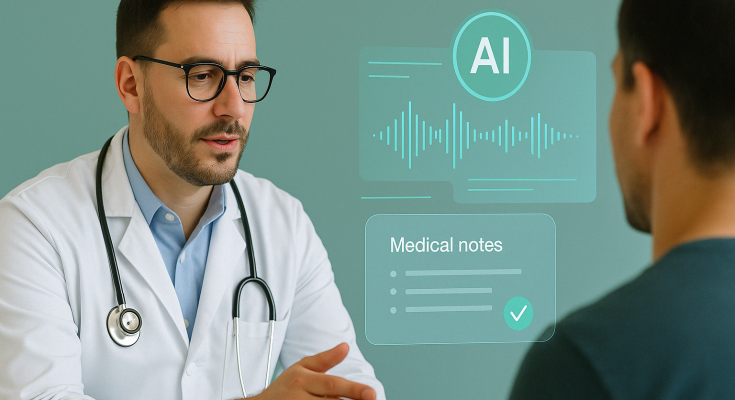The healthcare industry has always been data-intensive, with doctors, nurses, and medical staff required to manage extensive documentation alongside patient care. Traditionally, manual note-taking and transcription processes consumed valuable time, often creating a heavy administrative burden. Today, advanced technologies such as the AI medical scribe are revolutionizing this process, offering faster, more accurate, and more efficient solutions for clinical documentation.
What Is an AI Medical Scribe?
An AI medical scribe is a software-driven solution designed to assist healthcare providers by automatically capturing, processing, and structuring medical notes during patient interactions. Instead of physicians manually typing or dictating details, the system leverages natural language processing and machine learning to record clinical information in real time. This innovation allows doctors to focus entirely on patients while minimizing time spent on paperwork.
Unlike traditional human scribes, a medical scribe AI can operate continuously, process vast amounts of data instantly, and integrate seamlessly with electronic health record (EHR) systems. This makes it not just a replacement for manual documentation but also an upgrade in terms of speed, scalability, and reliability.
Benefits of AI Medical Transcription
One of the core functions of medical scribe technology is AI medical transcription. This capability converts spoken interactions between providers and patients into structured text with medical terminology accuracy. The advantages include:
Time savings: Physicians can reduce the time spent on note entry by up to several hours each day.
Accuracy: Modern systems are trained on vast medical datasets, ensuring that complex terminology is transcribed correctly.
Compliance: Automated transcription can support HIPAA and other healthcare data privacy standards.
Reduced burnout: By eliminating repetitive administrative tasks, healthcare providers experience less stress and improved work-life balance.
AI Medical Scribing in Practice
The process of AI medical scribing goes beyond simple transcription. Advanced systems can analyze context, categorize symptoms, highlight potential diagnoses, and even flag inconsistencies in medical records. This means providers receive not only a transcription but also an intelligent summary tailored for direct entry into EHR platforms.
For example, during a consultation, the software might detect patient history, current symptoms, prescribed medications, and follow-up plans. It then organizes this information into a structured format that aligns with clinical workflows. This eliminates the need for manual restructuring or editing.
The Role of Medical Transcription Software
While AI-driven tools are at the forefront, traditional medical transcription software remains an important foundation. These platforms have evolved significantly, incorporating speech recognition, predictive text, and secure cloud storage. When combined with artificial intelligence, transcription software becomes even more powerful—capable of adapting to different accents, handling specialty-specific vocabulary, and learning from corrections over time.
By integrating medical scribe AI technology into existing transcription software, healthcare organizations gain a hybrid system that blends accuracy with real-time adaptability. This results in streamlined patient documentation, better clinical outcomes, and reduced operational costs.
Future of AI in Healthcare Documentation
The adoption of AI medical scribe systems signals a shift toward more intelligent healthcare practices. As algorithms improve, these solutions will become more conversational, enabling real-time assistance during patient visits. Soon, providers may benefit from instant suggestions for treatment plans, automatic coding for insurance claims, and predictive insights based on patient records.
Ultimately, AI medical transcription and scribing will transform how healthcare professionals interact with data. By replacing tedious manual entry with automated precision, physicians can reclaim more time for what matters most—delivering quality care.
This new era of AI medical scribing is not simply about convenience; it represents a fundamental improvement in how the healthcare system operates. With robust medical transcription software and smart AI-driven tools, hospitals and clinics can reduce errors, enhance efficiency, and improve patient satisfaction—all while supporting physicians in their daily work.




